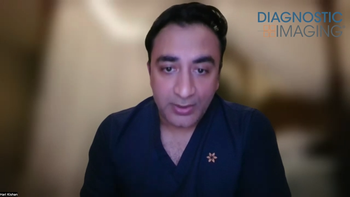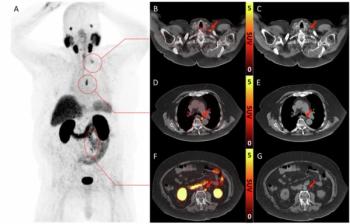
Philips prepares commercial shipments of multislice CT simulator for oncology
Philips Medical Solutions will begin shipping a multislice CT simulator next month, carrying on a tradition in CT oncology begun by Picker International and carried on by Marconi Medical Systems, which Philips acquired 2001. Philips has been testing its latest 16-slice configuration at four beta sites.
Philips Medical Solutions will begin shipping a multislice CT simulator next month, carrying on a tradition in CT oncology begun by Picker International and carried on by Marconi Medical Systems, which Philips acquired 2001. Philips has been testing its latest 16-slice configuration at four beta sites.
The company has been a major player at the high end of single-slice CT simulators since Picker's launch in 2000 of AcQSim. Philips released an extrawide-bore version of this simulator five years ago.
"We've gained a lot of experience having this wide-bore on the market," said Rafael Vaello, Philips global field marketing manager for oncology imaging. "Multislice brings a vast improvement in spatial and temporal resolution."
The Brilliance CT Big Bore Oncology announced in October last year (DI SCAN 10/13/04) underscores a Philips strategy of marketing CT scanners for specific niche applications. The company last year unveiled a 16-slice scanner tailored for sale to private practice cardiologists (DI SCAN 9/29/04).
Software tools turn wide-bore scanners into CT simulators. The Brilliance Big Bore system includes localization software for marking isocenters directly on the CT console, according to Vaello. It also provides virtual fluoroscopy for virtual simulation and respiratory-correlated imaging.
Philips is the third company to migrate multidetector technology to oncology. GE Healthcare and Siemens Medical Solutions both are selling wide-bore MSCTs for therapy planning and diagnosis. Toshiba is planning the first installation of its Aquilion LB (large bore), a 16-slice CT scanner designed for this niche, for summer.
Brilliance CT Big Bore Oncology features a true 60-cm field-of-view. This is enough to capture all the data oncologists need, according to Vaello.
"It will capture the skin on these patients no matter what position they're in, so you can measure dose accurately," he said.
Other vendors profess even larger fields-of-view stretching to or beyond 80 cm. Siemens claims the FOV on its Sensation Open extends literally to the edges of its 82-cm bore. This pushes technology to its mathematical limits, using advanced postprocessing.
The biggest advantages of multislice over single-slice CT simulators are the fast scan times and wide coverage offered by multislice detectors. Philips' Big Bore Oncology product covers 24 mm of body area with each subsecond rotation. This increased precision translates into more accurate targeting of the tumor, Vaello said.
But achieving this progress has not been easy. Philips, GE, and Siemens have all needed to rearrange the geometry of their gantries to increase the space surrounding the patient. Doing so was a critical feature of CT simulation, as patients must assume different and sometimes complex positions to simulate the ones assumed during radiation therapy.
Moving the detector and x-ray source farther apart increased the centrifugal force being applied to the components. Philips designed its Big Bore gantry not only to withstand this force, according to Vaello, but to operate efficiently along a wider diameter. Electronic components were redesigned, as were data transfer subsystems and even the anchors used to keep these components in place.
Unlike other companies, Siemens did not change the distance between x-ray source and detector to increase the bore of its Sensation Open. Much of the extra space was gained by removing a bulky filter used for ultrahigh-resolution imaging of tiny anatomic structures, such as the inner ear. Siemens also redesigned its generator to be more compact.
Siemens has sought to capitalize on the wider bore of its Sensation Open by marketing the scanner for applications in and outside of oncology. The company has developed a special table that supports patients weighing up to 615 pounds. Bariatric applications are accompanied by ones related to trauma and intervention.
Other vendors so far have shied away from such applications. But Philips, with its history of application-specific 16-slice scanners, is considering a new version designed for the bariatric marketplace.
Newsletter
Stay at the forefront of radiology with the Diagnostic Imaging newsletter, delivering the latest news, clinical insights, and imaging advancements for today’s radiologists.






























